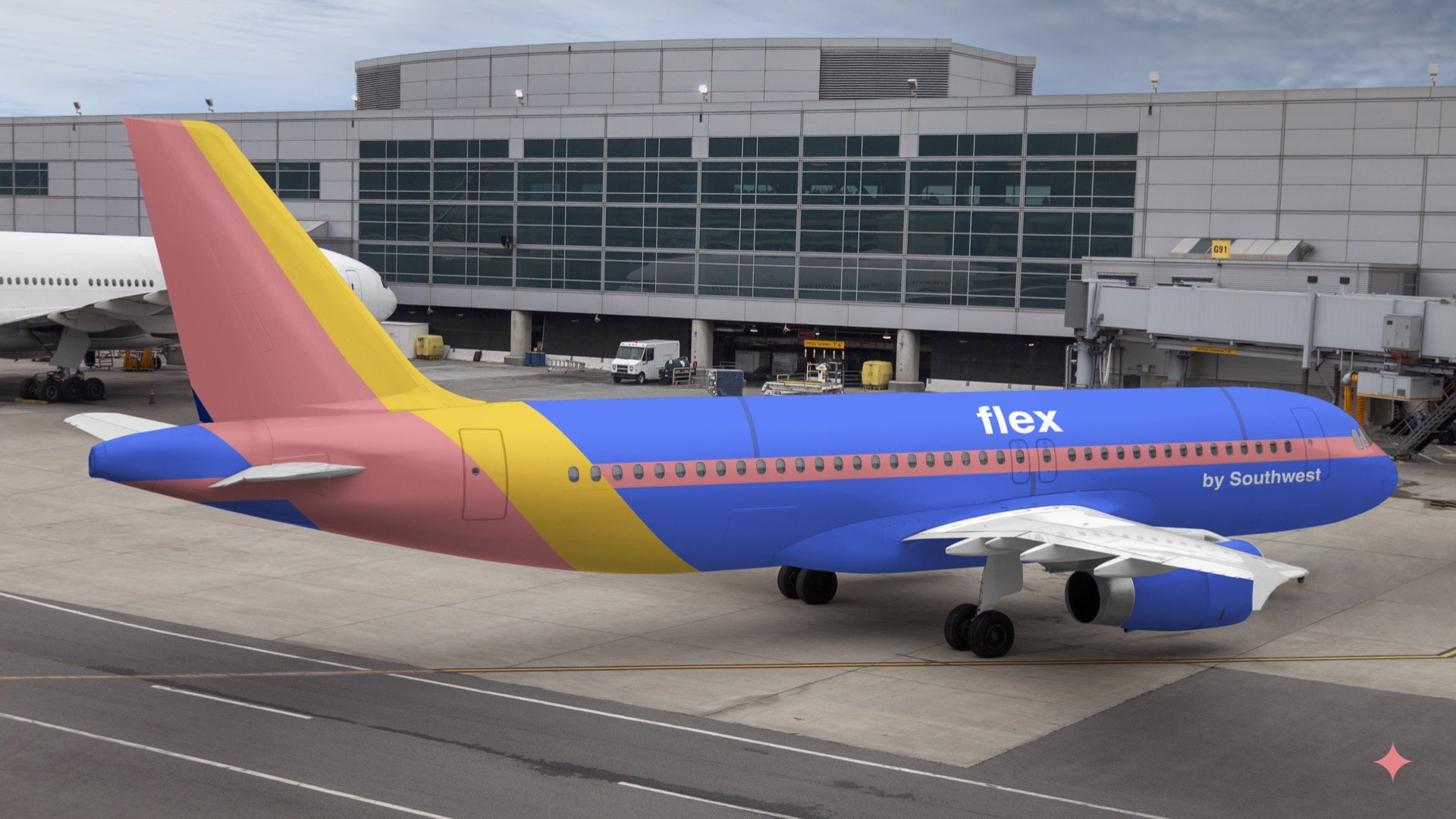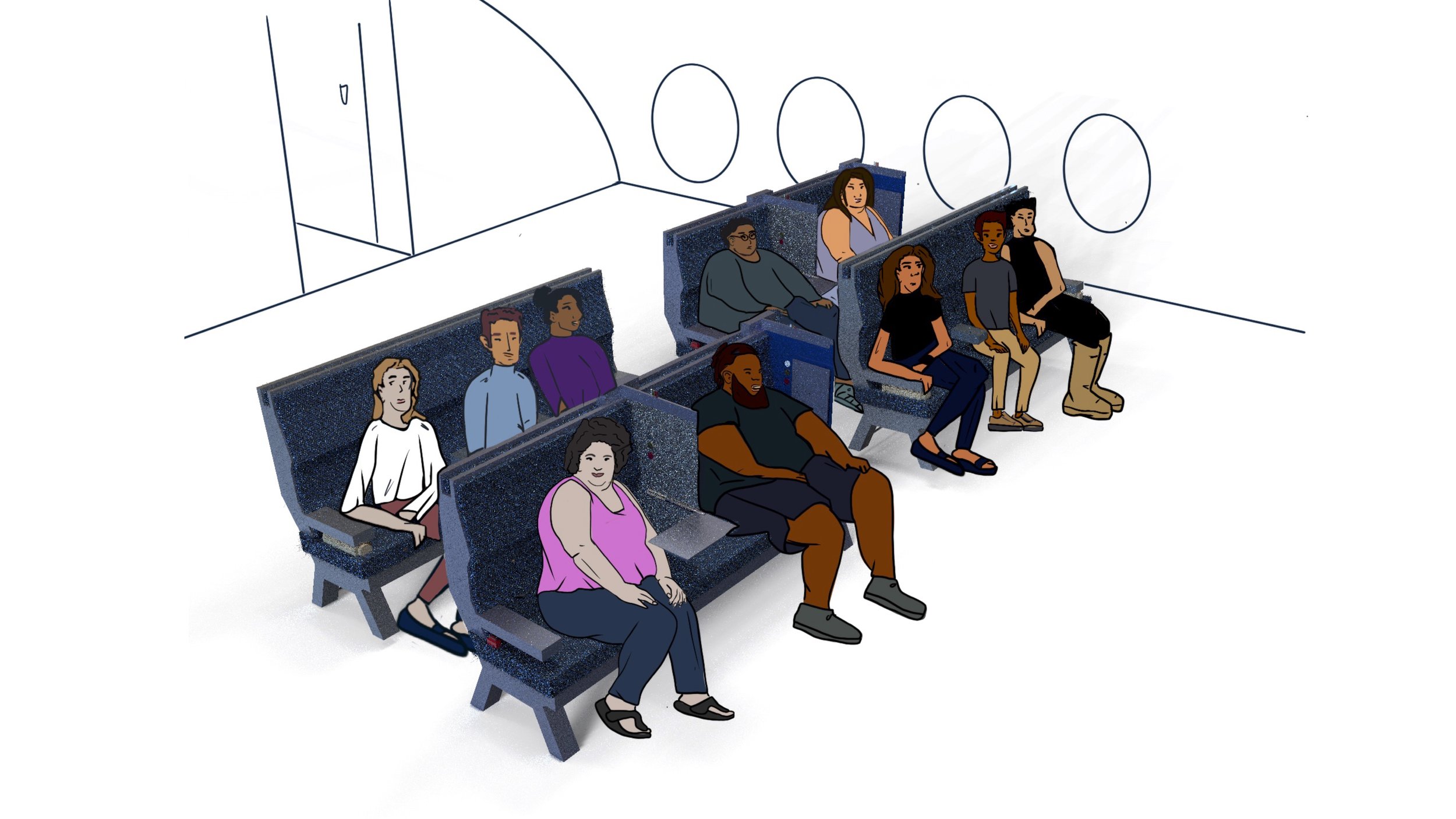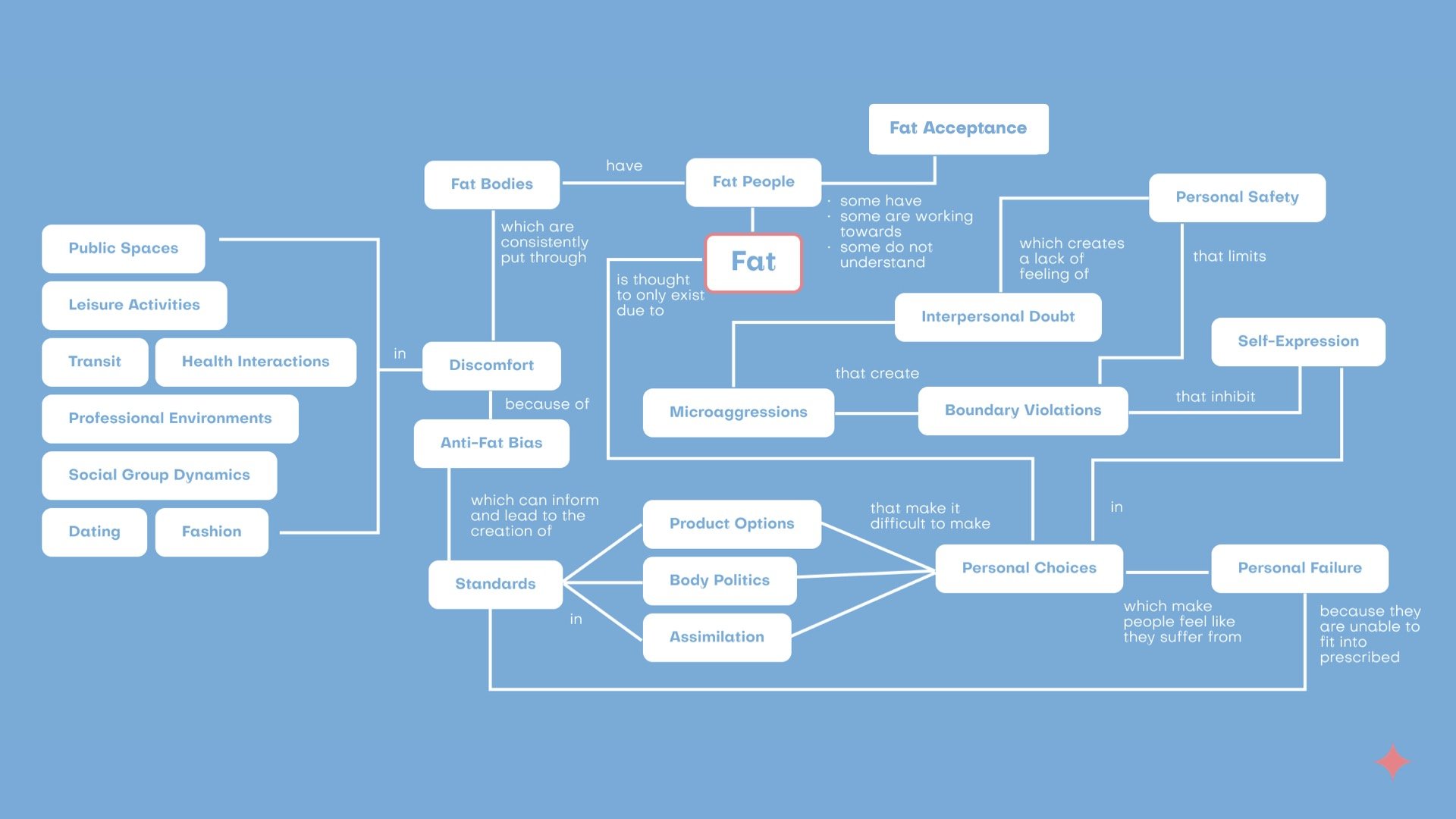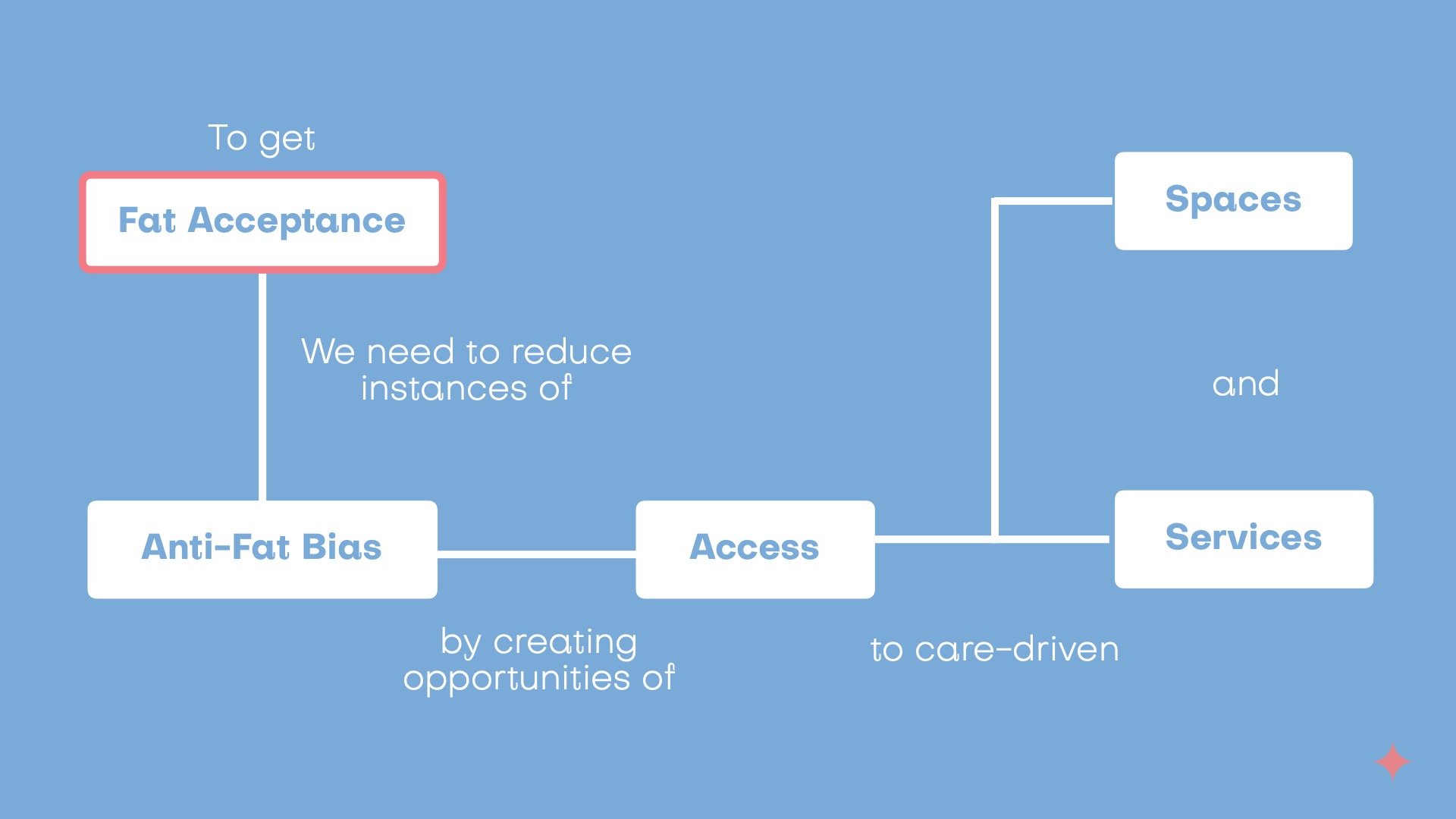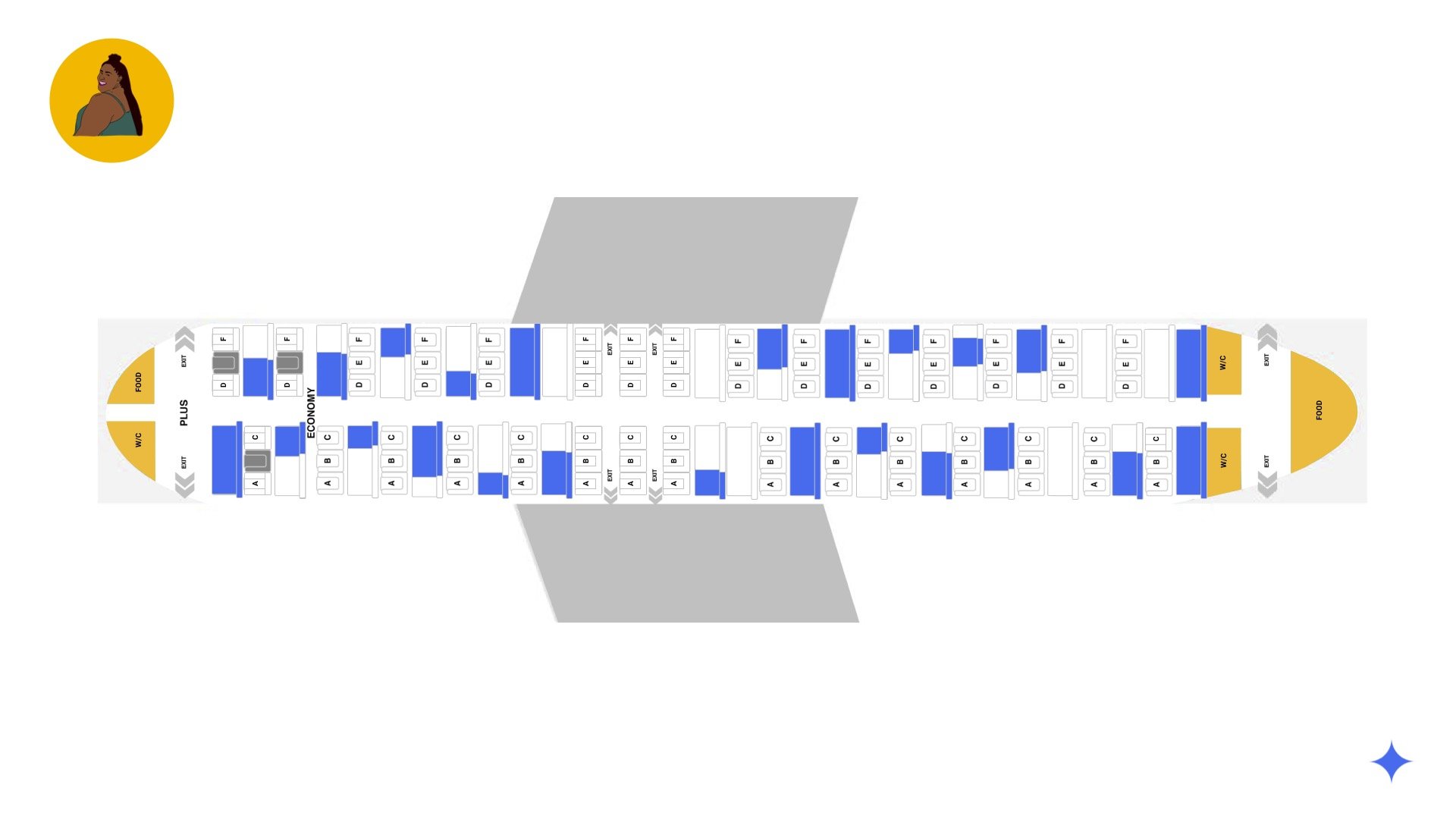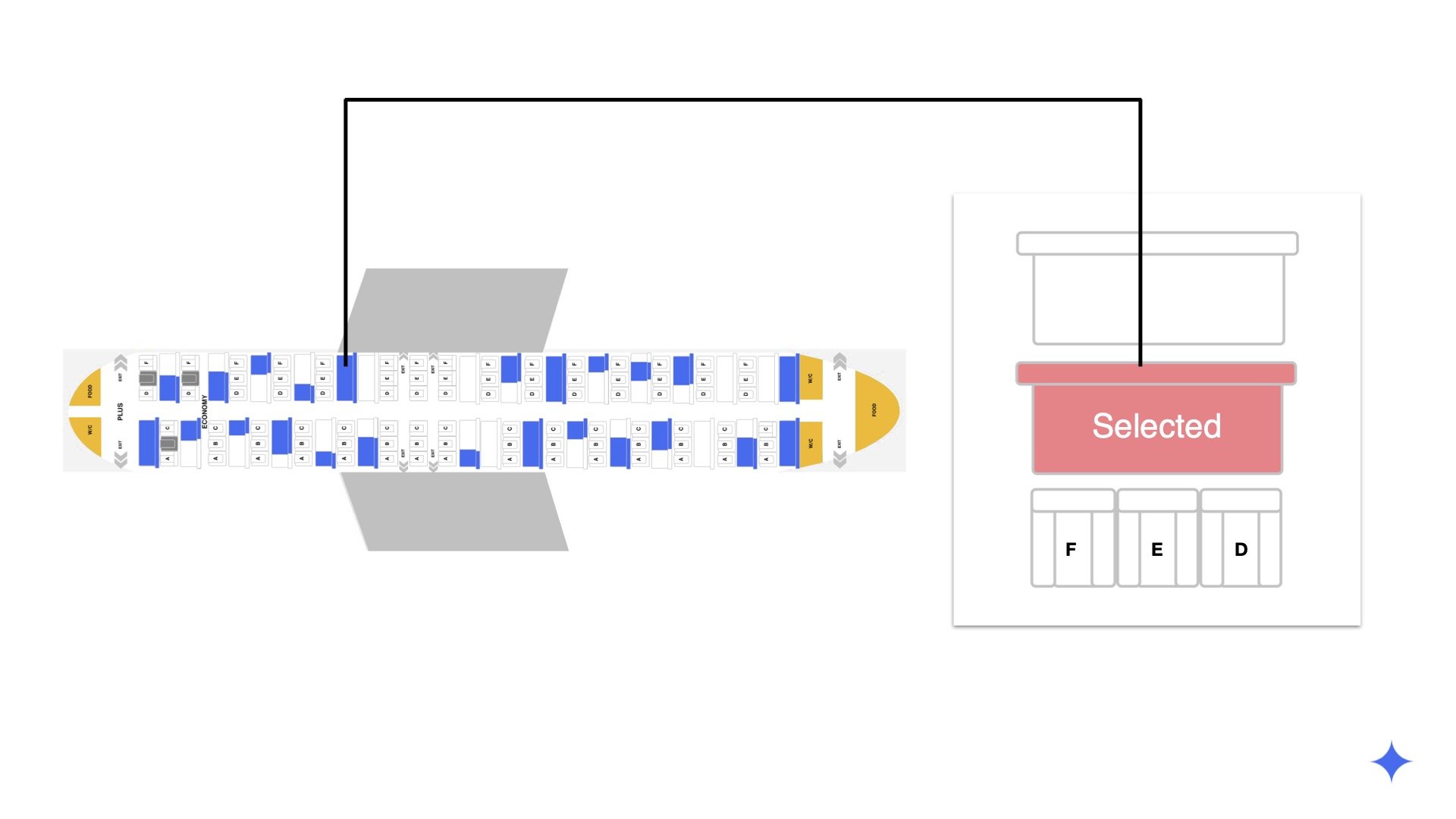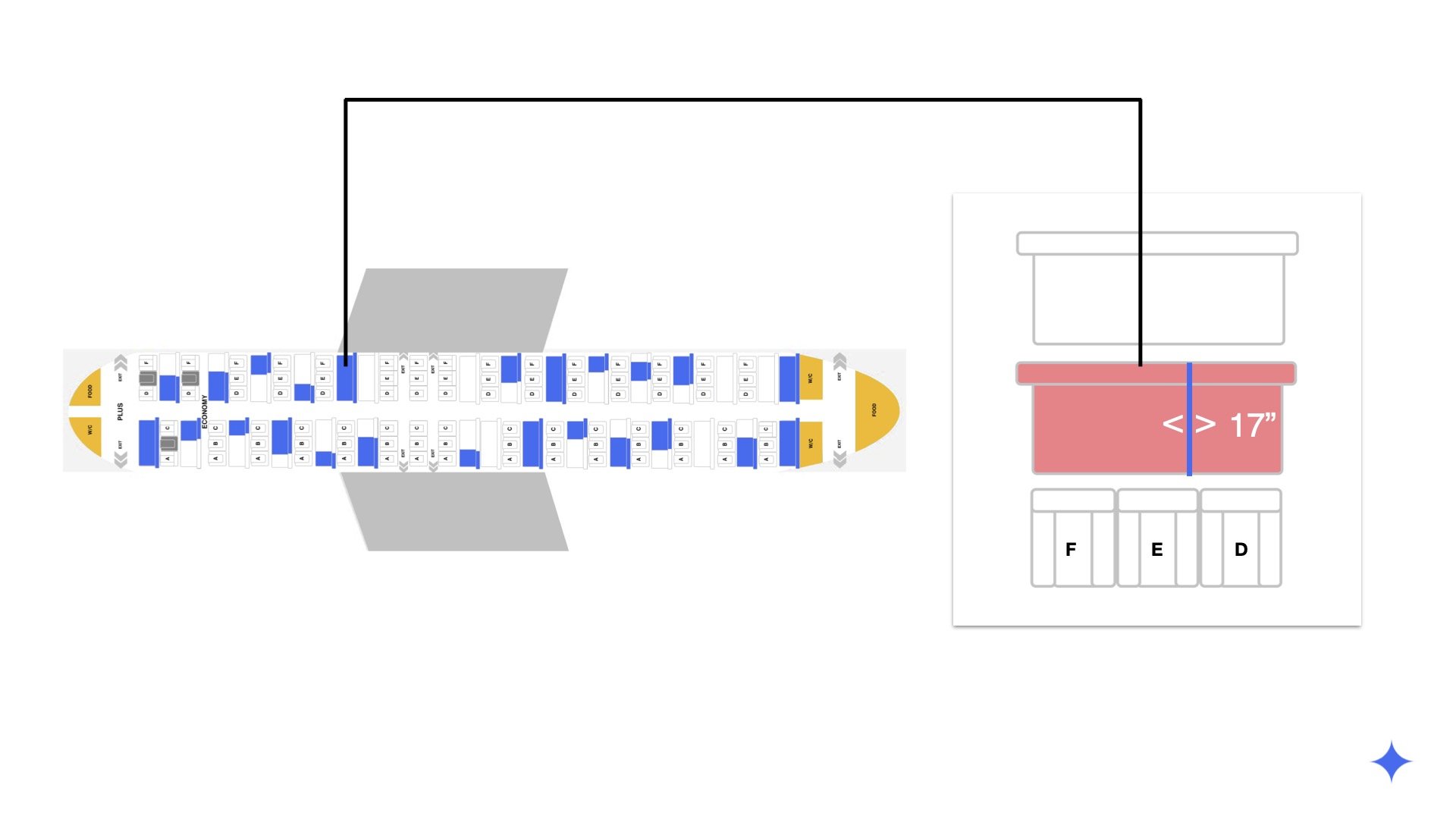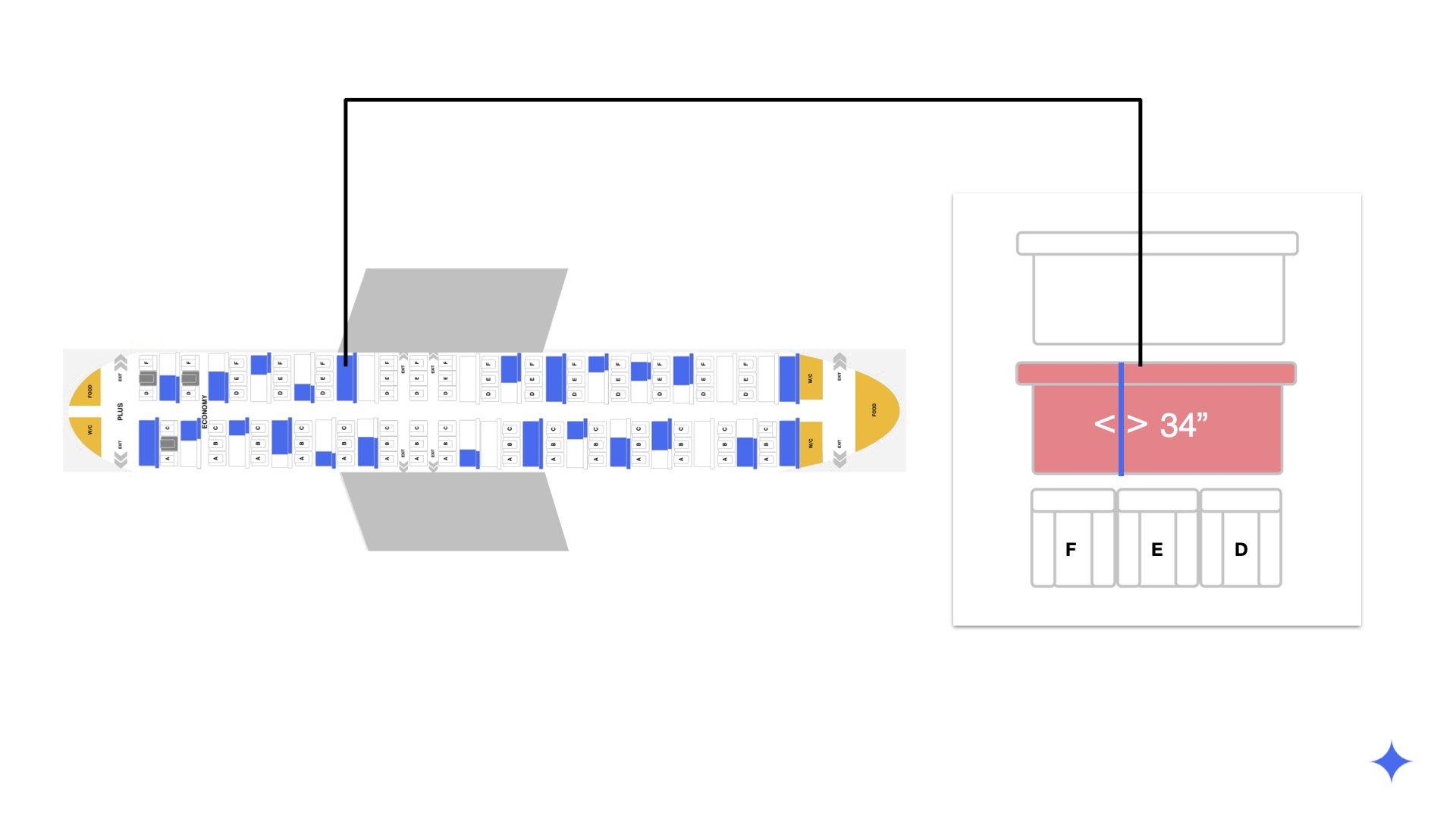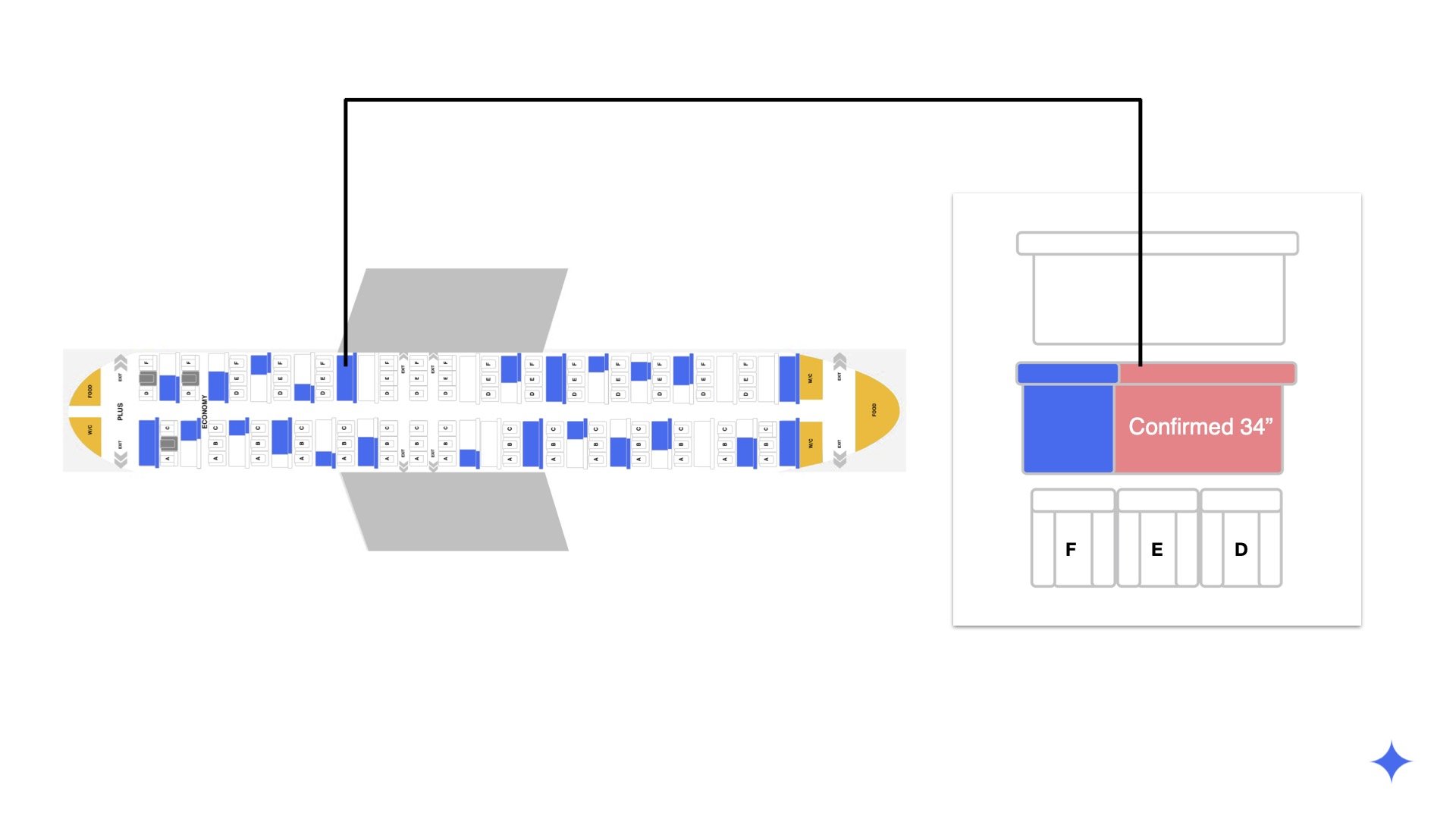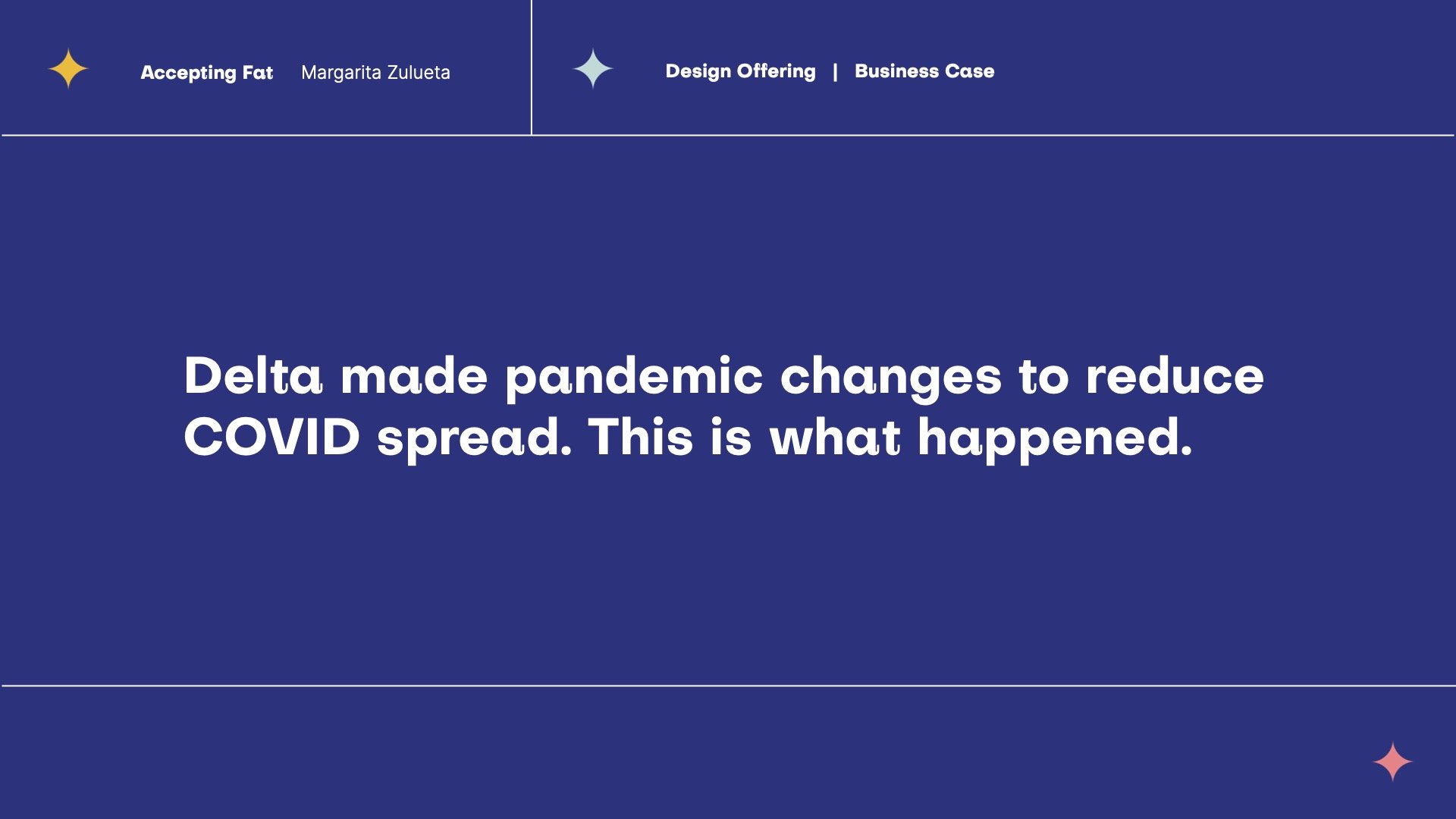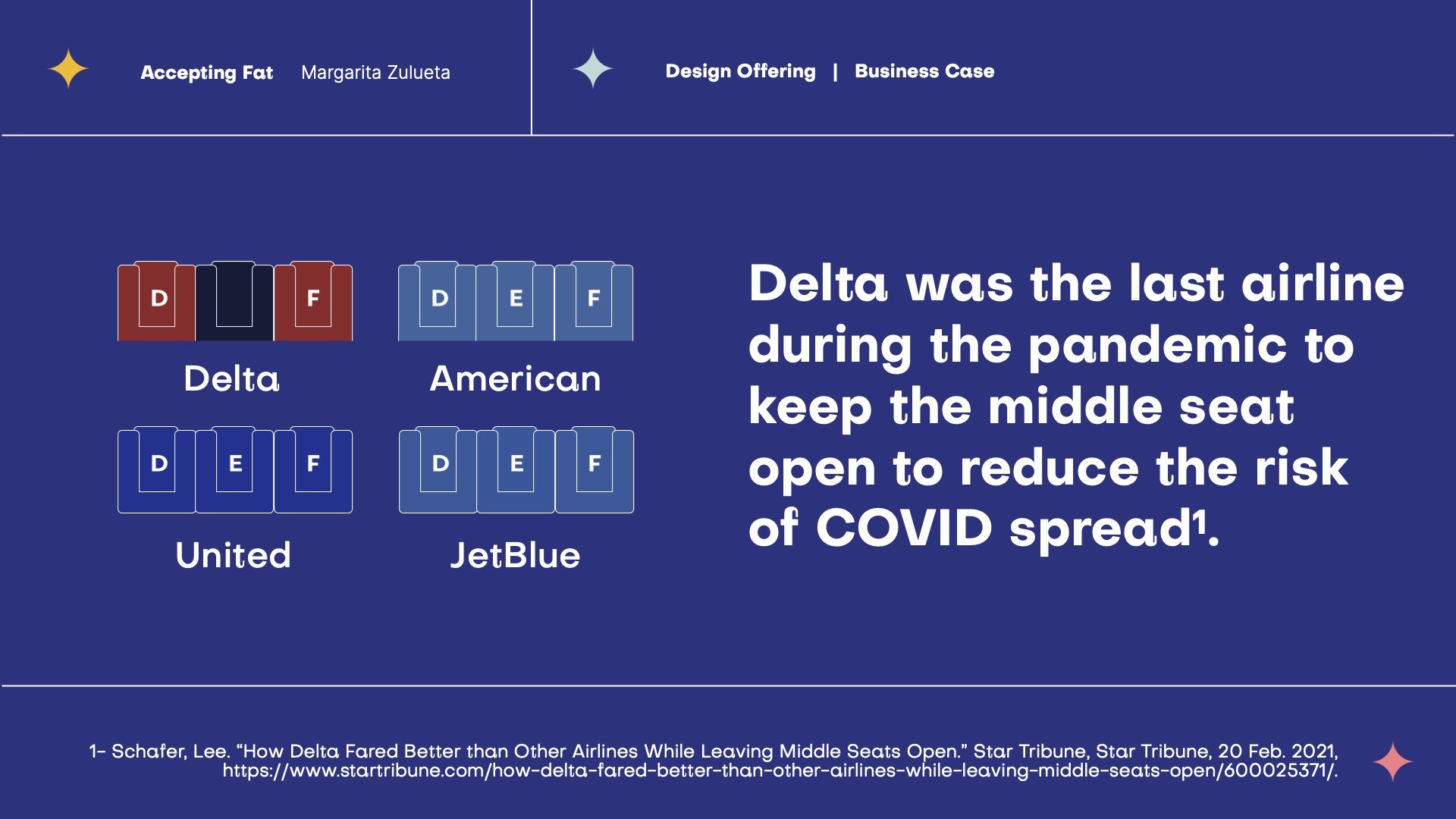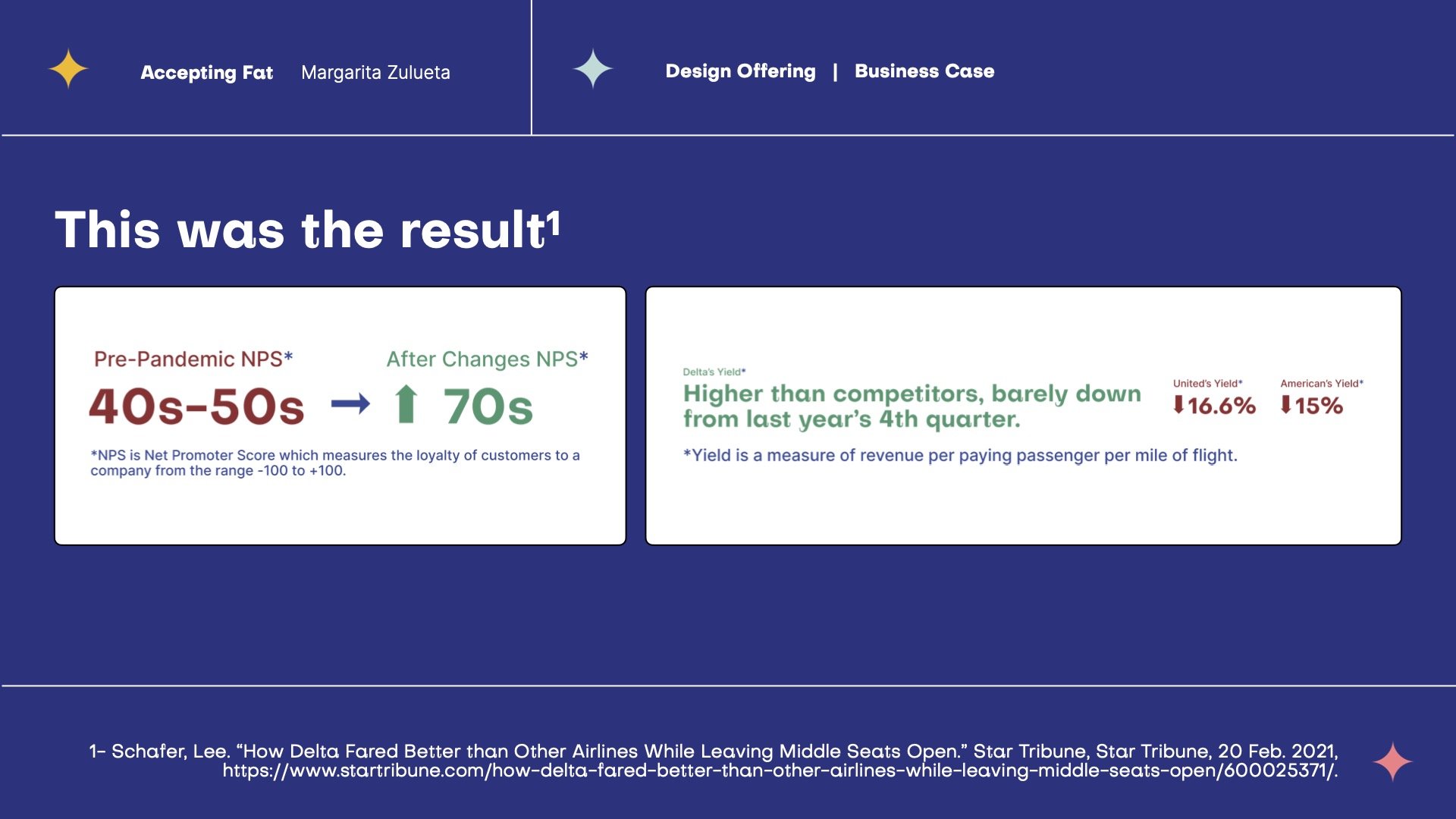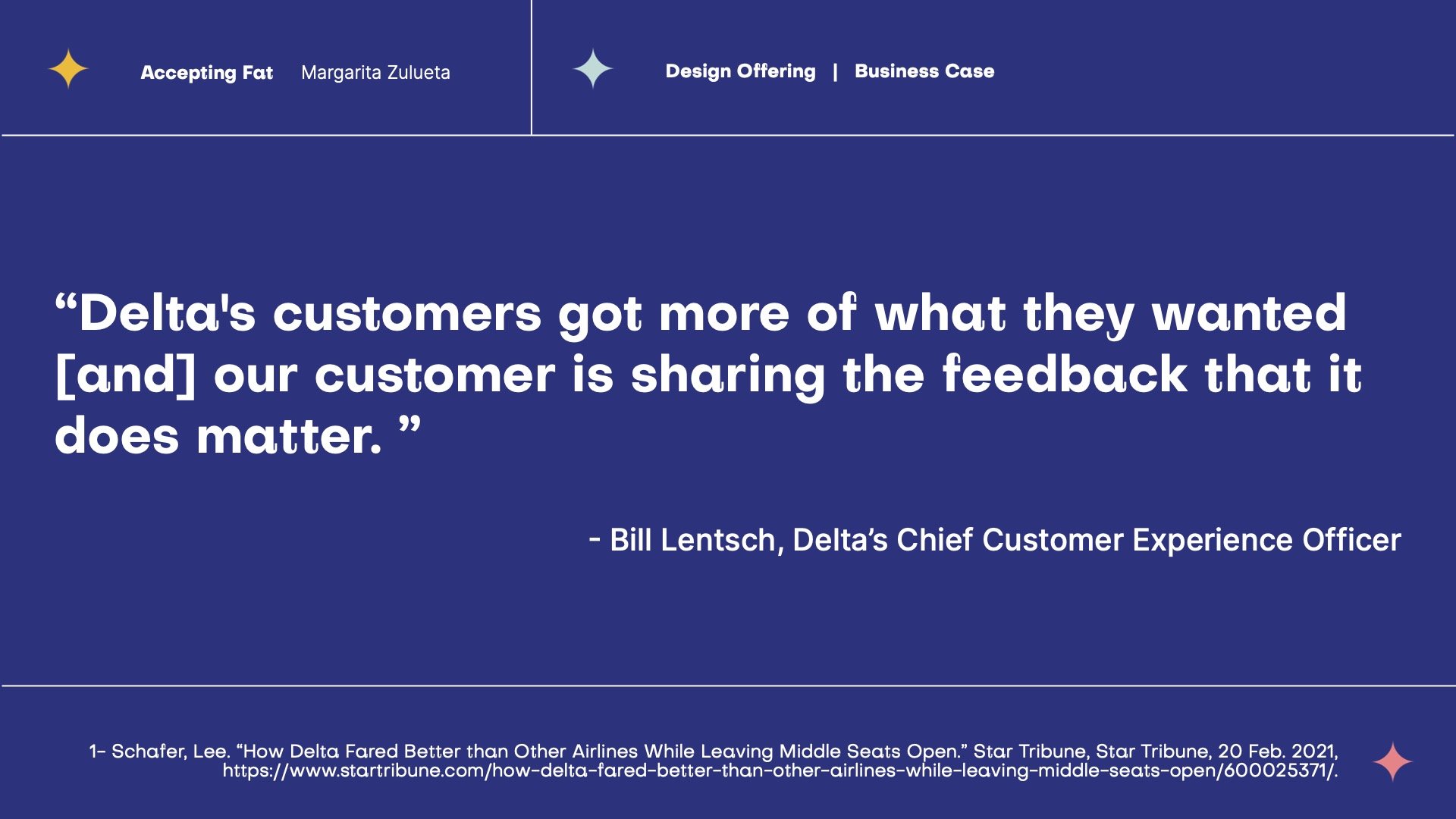Flex: Airplane Seating Addressing Anti-fat Discrimination
Margarita Zulueta's upcoming thesis, Accepting Fat, proposes fat acceptance through design offerings to combat anti-fat bias. Specifically, her project Flex—a speculative new fleet incorporated into Southwest Airlines—addresses discrimination in airplane systems through the lens of seating.
"How might we create an airplane experience that implements care-driven fat acceptance structures for larger passengers?”
In her secondary research and user interviews, Margarita noticed that the issue of discrimination in airplane seating popped up numerous times. In What We Don't Talk About When We Talk About Fat, Aubrey Gordon details negative encounters experienced while traveling—from being recorded on flights to seeing insulting text messages from co-passengers to being escorted off planes. Gordon recounts how larger passengers were treated more like cargo rather than as people and valuable passengers. Feeling like cargo comes from co-passenger attitudes, but also from airline policies themselves. Many airlines have "Passenger of Size Policies"—varying between brands—to deal with larger passengers.
“Some policies state that based on size and availability, a person can be bumped from their flight or moved from their seat if they are a ‘hindrance to other passengers.”
Margarita's research also revealed that multiple airlines have the policy of requiring the ‘purchase of a second seat’ if you are over a specific size. “Southwest is currently the only airline to refund customers for buying the second seat,” Margarita adds. “Other companies mandate more punitive measures, such as policies stating that based on size and availability, a person can be bumped from their flight or moved from their seat if they are a ‘hindrance to other passengers’.”
Margarita asked the question, "how might we create an airplane experience that implements care-driven fat acceptance structures for larger passengers?"
Flex addresses these issues by creating versatile spaces aboard flights. Margarita explained that the three main goals of her project are to (1) ensure that larger passengers can fly without complications, (2) minimize fat-shaming interactions on flights, and (3) have enough comfortable seating for all passengers, regardless of size.
Flex reorganizes the current cabin layout by mixing a new seating structure amongst standard plane seats. This intervention creates an inclusive flight atmosphere, providing more flexible options for travelers and multiple features addressing varying needs.
The seats have been physically augmented with a few changes. "First, the seats are one long bench, which creates the opportunity for tracks and privacy screens to be implemented to create the opportunity for width adjustments as needed per passenger and reduce space anxiety," Margarita explains. "The seats also contain privacy screens that reduce hostile passenger interactions with a physical boundary that makes it hard for people to be in each other's space."
With Flex, it's not only that the physical seats have been altered, but the way of booking the seats has changed as well. Here's how the seating confirmation process would work:
Users can click into the bench seat to see what is available by using the digital seating map. Next, a slider pops up, allowing a person to drag the necessary amount for the seating and ensure that larger passengers can reserve the space they need and not be bumped from the flight. Once that slider is set, the passenger can book and confirm the seat size they need and not worry about being bumped from the flight.
Let's take a look at the slides below showing Margarita's business model research. When Delta implemented policy adjustments based on changing circumstances—in this case, COVID-19—the result was beneficial for both customers and the airline itself. "Customers saw that Delta positioned itself as a brand that cares about customer feedback and would be willing to make those changes for sustained customer loyalty," she explains. This successful example of an airline adapting to changing needs inspired her business model for Flex. "The Flex fleet is Southwest's speculative response to what larger passengers want in being respected as passengers and creating customer loyalty for a broader demographic of people."
The new Flex fleet focuses on flexible, inclusive, equitable travel for larger passengers by showing the different scenarios where all passengers can enjoy an inclusive and equitable travel experience.
Stay tuned for Margarita’s thesis presentation in May 2022! You can follow her work at margaritazulueta.com.

